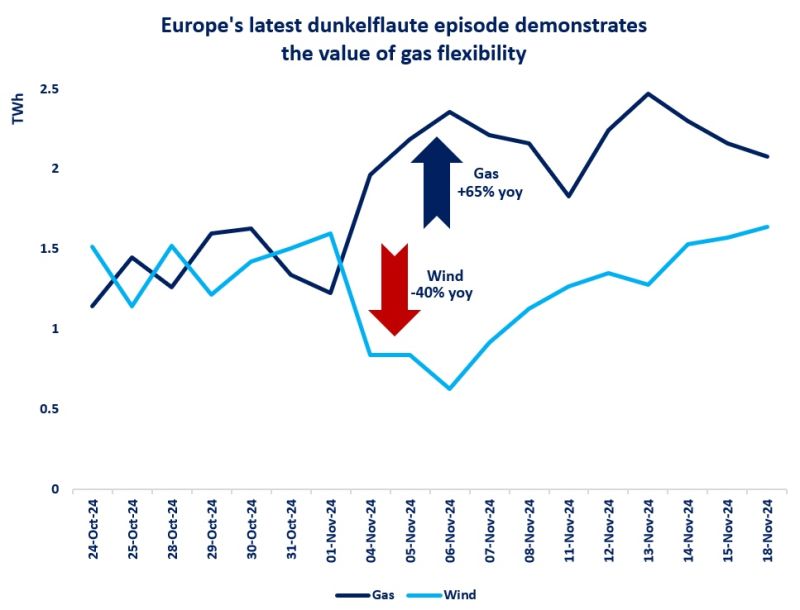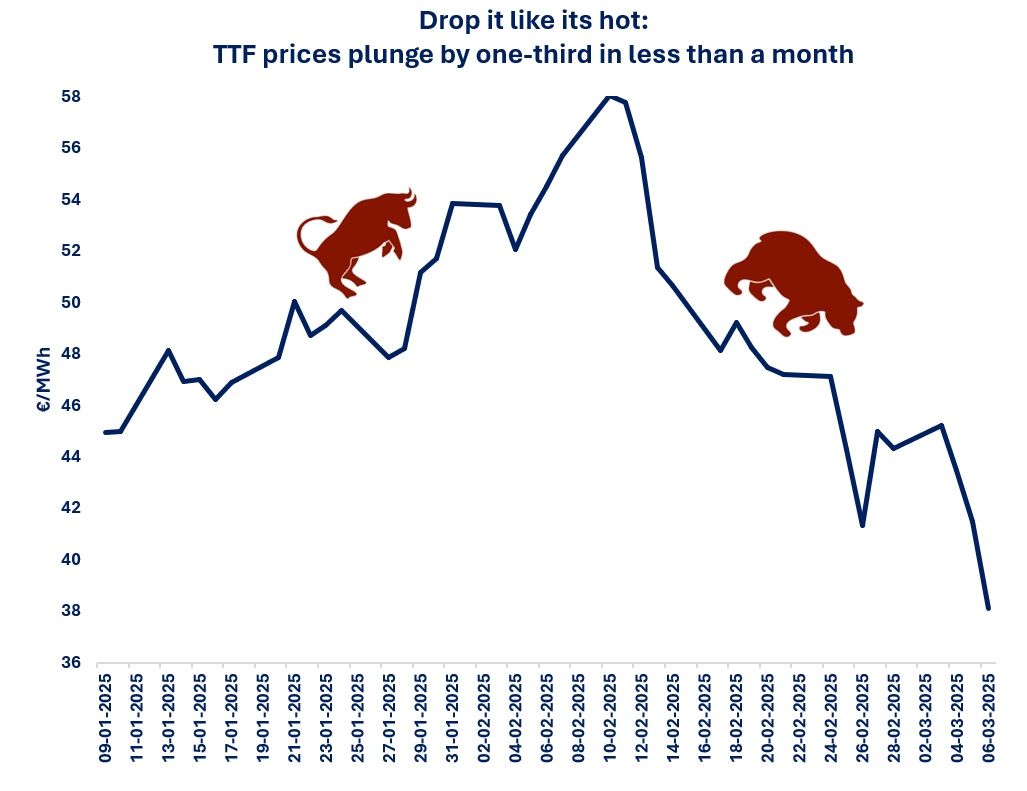

Europe’s latest dunkelflaute episode once again demonstrated the critical importance of gas supply flexibility in an increasingly weather-dependent energy system.
Low wind speeds since the beginning of November pushed down European wind power output by 40% yoy, a decline of near 15 TWh compared to last year.
Meanwhile, colder temperatures have been pushing up electricity demand for space heating.
The wind shortfall was largely offset by flexible gas-fired power plants, which increased their output by 65% yoy (or 13 TWh).
Besides gas, nuclear and coal-based generation have been also flexing up, partly to meet higher electricity demand.
Stronger gas demand was primarily met by strong storage draws, with more than 4 bcm withdrawn since the start of November, higher piped gas deliveries from Norway and we also see LNG inflows speeding up.
Gas and wind is like a perfect modern day romance, full of volatility, unpredictability and ups and downs.
And the value of gas supply flexibility should not be forgotten… it always makes up for its capricious partner to keep up the lights even on a dark, still dunkelflaute day.
What is your view? How is the role of gas-fired powgenation evolving? Should the flexibility services of gas-fired power plants be compensated? If yes, what mechanisms would be best suited?
Source: Greg MOLNAR













